How to Write Every Kind of Social Media Bio (+25 Free Templates)
Your social media bios are your audience’s first impression of you and your brand. If anything seems off, you face the possibility of driving away potential followers—and customers.
Your bio should address six key pieces of information:
- Who you are
- Where you work
- What you do
- The topics that interest you
- Your brand’s tone
- How someone can get in touch with you
To make sure you cover your bases, we’ve created the following easy-to-use templates so you can effortlessly create your own social media bios for Instagram, Twitter, LinkedIn, Pinterest, and Facebook.
Bonus: Get the step-by-step social media strategy guide with pro tips on how to grow your social media presence.
An Instagram bio is like your brand’s storefront. If somebody knows nothing about your business, your bio can answer basic questions like who you are, what your brand is about, and why they should care.
Those 150 characters should compel visitors to your profile to take action—whether that means clicking on your link, visiting your bricks-and-mortar shop, or simply following your account.
Whether you’re looking to polish up the bio for your personal brand’s account, or a business account, these templates and examples can help cover your bases.
Personal brands
There are many ways you can position your personal brand with your Instagram bio. Regardless of format, the best Instagram bios have some key features in common.
Template 1:
[Interest 1] + [Interest 2] + [Interest 3] / [Location]
_________
#[Hashtag]
_________
[Call-to-action]
↓
[Link]

Template 2:
[Name]
[Role], [Title], [Something that sets you apart]
Founder of [personal brand]
[Link]
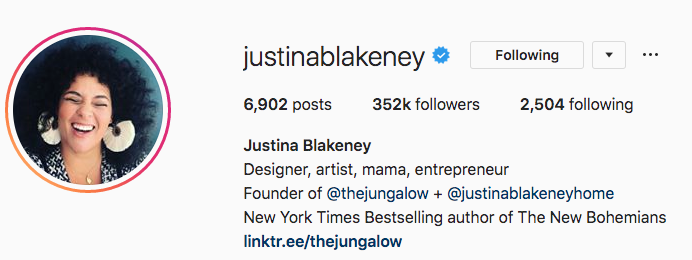
Template 3:
〰️[Talent]
〰️[Job title]
〰️ [Something that makes you unique]
〰️[CTA]
〰️[Link or email address]
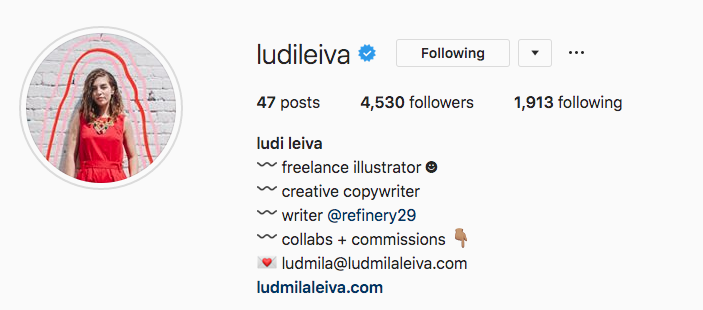
Companies and organizations
Template 1:
[What you are] + [What you do] + [Who you do it for] + [How you do it]
[CTA] + [Hashtag]
[Link]

Template 2:
[Mission or value statement]
[Unique positioning statement]
[CTA]
[Link]

Template 3:
[Who you are] + [What you aim to do]
[CTA]
[Hashtag]
[Link]
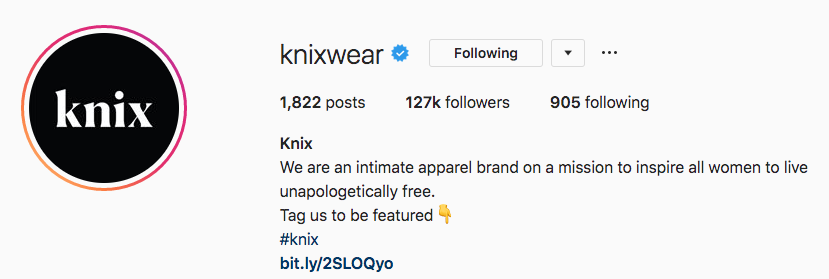
If you’re ignoring your Twitter bio, you’re ignoring a key opportunity to be discovered through search engines.
As a highly visible first point of contact for potential new followers both within and outside Twitter, it’s crucial that you put some time and effort into these 160 characters.
Some main features you should be including in your Twitter bio are:
- Your name
- Username
- Location
- Website
With that in mind, here are some templates and examples to get you started.
Personal brands:
Template 1:
[What you are] | [Your company’s Twitter handle] | [Other details about yourself] | [Where your work has been seen]

Template 2:
[Witty commentary about yourself]. [Role], [Companies you’ve worked for]. [Where your work can be found.] [Special projects you work on with Twitter handles if available].
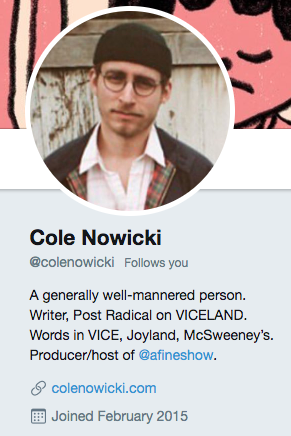
Template 3:
[How you identify]. [Professional titles]. [Other roles]. [Email address]. [Gender pronouns].

Companies and organizations:
Template 1:
[Slogan or catchphrase]. Use [hashtag] to share your experiences. Need to contact our support team? Use [customer service hashtag or specific account handle].
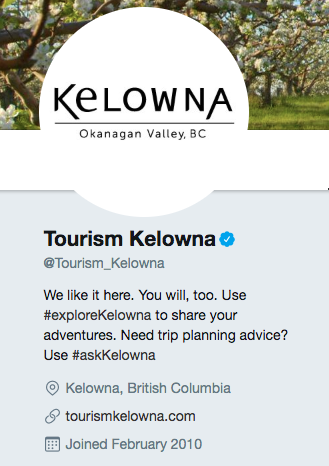
Template 2:
[What you are] + [Where you’re located]. [What you offer]. [Opening hours]. [Instagram handle.]
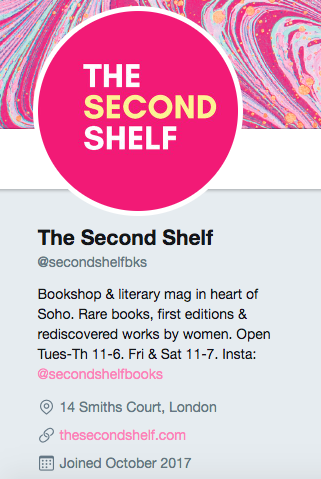
Template 3:
[Who you are]. [What your followers can expect from your account.] [Alternative account links.]
Bonus: Get the step-by-step social media strategy guide with pro tips on how to grow your social media presence.
Get the free guide right now!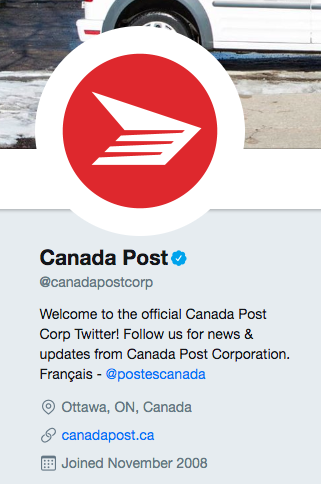
If you’re looking to grow or maintain your career and business, your LinkedIn page needs to go beyond the basics. If someone Googles your name, it’s your LinkedIn profile that shows up approximately 90 percent of the time—so you better make it good.
While building a Company Page is important if you run a business, your personal profile should be perfected so that you can gain a following, appear as professional as possible, represent your company properly, and attract recruiters if and when the time is right.
The most important part of your LinkedIn page is the summary section. Here, you have 2,000 words to showcase your skills, work history, unique talents, and anything else that sets you apart in your industry.
Template 1:
[Name] has worked in [industry] for [number] years. Their career started in [location] where they worked at [company] as a [role].
Since then, [name] has [achievements] and [accomplishments].
[Name] is passionate about [passion 1] and [passion 2]. They have [examples of how you have put these passions to work].
Specialties: [list of special skills and talents ie. facilitation, program development, event planning, writing]
Specific areas of expertise: [List of topics such as technology, art, investing].
Template 2:
[Job title] with [number] years experience [what you do].
Strengths focus around [strength 1], [strength 2], and t[strength 3]. With these strengths, I have experience [list of areas of experience] and a proven track record of [successes].
Specialties: [List of specialties and unique talents.]
Template 3:
[Name] has spent [number] years [what you do] through [how you do it]. They are a member of [any organizations or boards you are a member of].
[Name] is the [role] at [organization or company name]. They regularly contribute to [publications or organizations you contribute to] with their expertise in [areas of expertise].
[Name] is the recipient of [awards and accolades].
Template 4:
[Job title]
Expert at [what you’re an expert at]
Highly accomplished [job title] with [number] years [what you do] for [types of organizations].
Expert in [what you’re an expert in]. Known as a [what you’re known for/your unique talents]
Specialties:
➲ [Specialty 1] – [description]
➲ [Specialty 2] – [description]
➲ [Specialty 3] – [description]
Your Pinterest bio lets you introduce yourself and your business to your followers. Pinterest is highly visual, so your bio needs to be short and to the point, without distracting from your actual content.
You only have a few seconds to convince a potential follower to follow you or repin your content, so make these 160 characters count.
Something else to keep in mind is that while hashtags are useful in your bios on other social networks, Pinterest doesn’t work that way. Instead of focusing on hashtags, Pinterest finds keywords you use in your bio, post descriptions, and descriptors on your boards to help relevant users find you.
With this in mind, make sure your bio contains descriptions of yourself that are relevant, and choose every word strategically (without sounding like an SEO robot).
Personal brands
Template 1:
[What your followers will find on your page] + [the unique value your content will provide].
[CTA]: [Link]
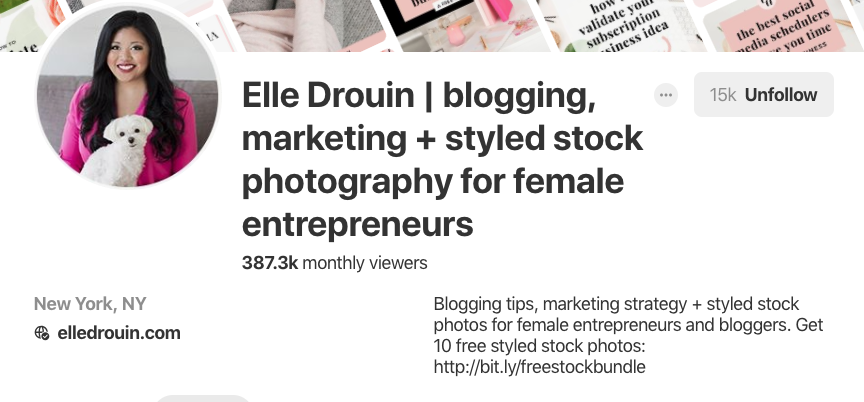
Template 2:
[Title and organization] | [Role] | Instagram handle | CTA: [email address]
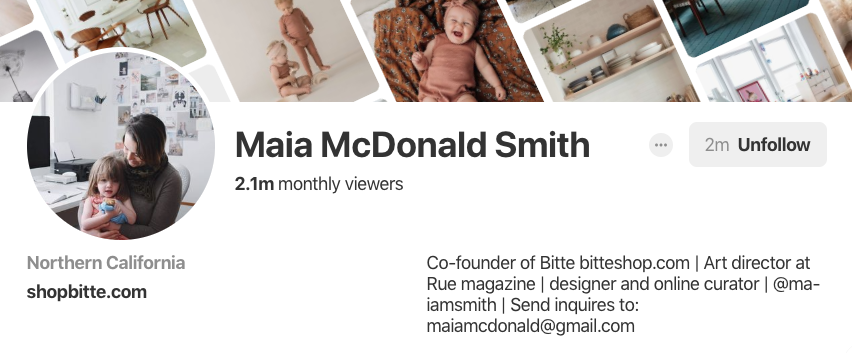
Template 3:
Hello! I’m [name], [role]. I’m Pinning [the type of content you share].
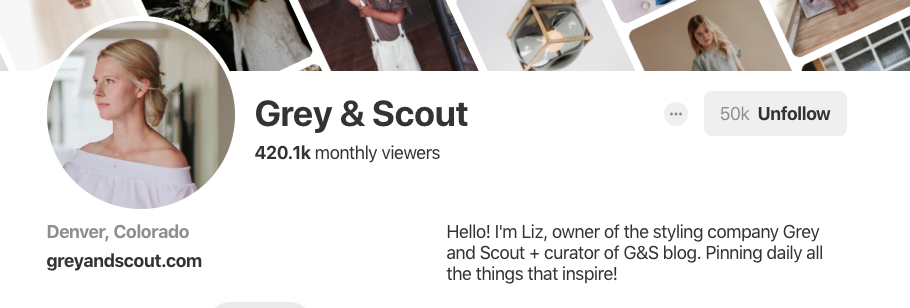
Companies and organizations
Template 1:
[What you are] for [who your target audience is]
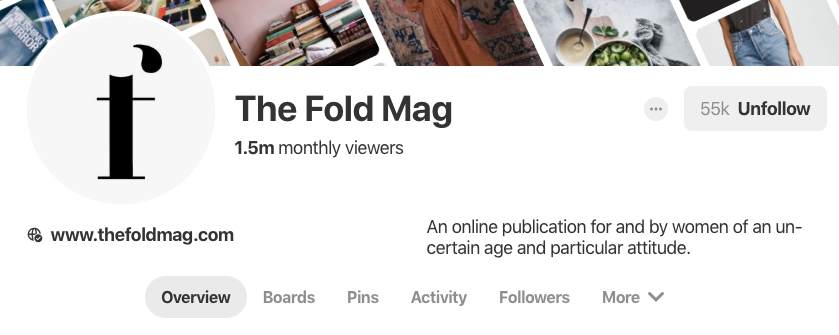
Template 2:
We’re sharing [type of content] and [type of content] that you can only discover through [company name]. Share yours using [branded hashtag].
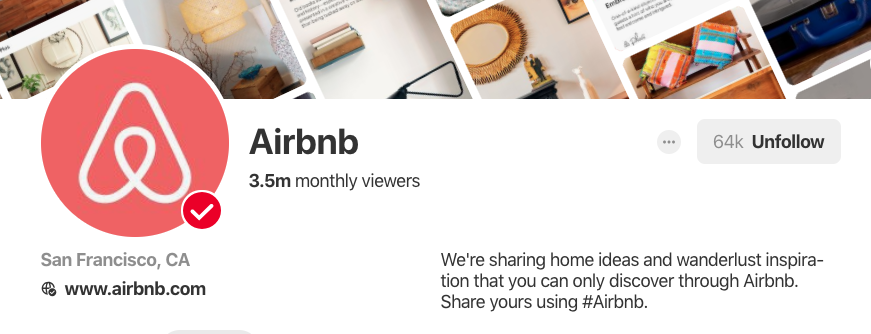
Template 3:
[Company name] is [what your company is]. Follow us here to [what you offer your followers] and keep updated on our posts.
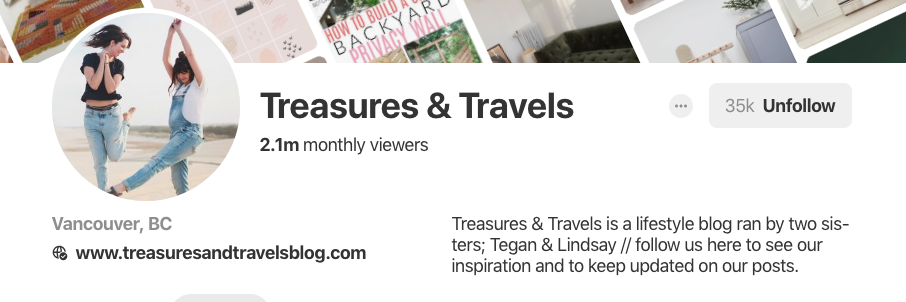
If you’re dedicating large portions of your budget to your business’ Facebook presence but ignoring your About section, you’re missing out on a huge opportunity to engage customers.
A well-done About section can answer many of your Page visitors’ questions—saving you a lot of time and energy. If your Page doesn’t have relevant and helpful information users are seeking, there’s a good chance they’ll simply leave and take their business elsewhere.
The About Page has three key sections. First, the Business Info area is where you include core company details such as opening date and mission statement.
The Contact Info section is probably the most important part of your Facebook Page. This is where you’ll include your business’ website, phone number, email address, and other contact information. It seems self-explanatory but you’d be surprised at the number of companies who forget to fill this part out.
Finally, the ‘More Info’ portion covers other details with a brief ‘About’ section, a ‘Company Overview’ and other information.
As Facebook is often the very first place a customer goes to get information about you, having all of this information filled out is important.
While most of the info will be quite straightforward to fill out, here are some ideas to get started with the About section and Company Overview portion.
Template 1:
Welcome to the official Facebook Page for [Company name]! For customer service and support issues, call [phone number] between [days and hours of operation].
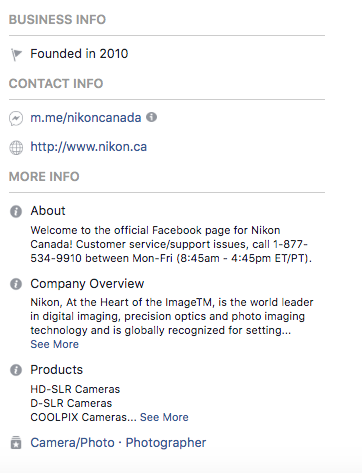
Template 2:
Hi, we’re [company name]. We believe that [company values and beliefs]. We encourage everyone to share their thoughts and opinions on our social channels in a fun and respectful manner.
Comments will be moderated and deleted if they contain profanity, obscenity or vulgarity, defamation to a person or people, name-calling and/or personal attacks. Repeated violations of our comment policy may cause the author to be blocked from [Company name] social media.
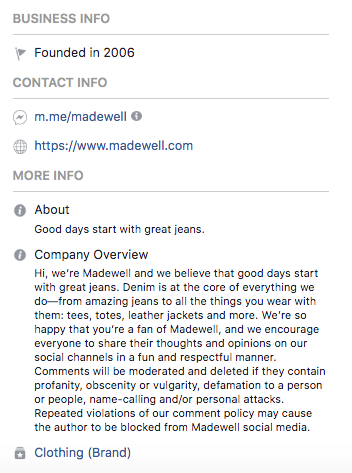
Template 3:
[Slogan]. [Company name] helps our customers [3 things your business does].
Example:
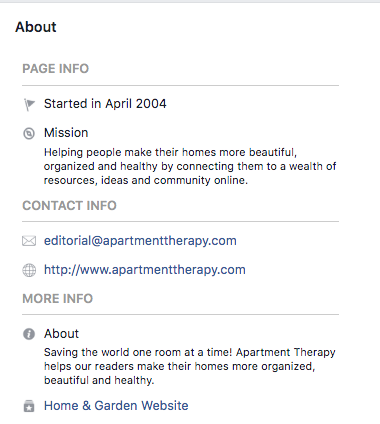
With these social media bio templates you’re one step closer to being a social media pro. Start scheduling and publishing posts with Hootsuite to take your skills to the next level.
The post How to Write Every Kind of Social Media Bio (+25 Free Templates) appeared first on Hootsuite Social Media Management.
Contributer : Hootsuite Social Media Management https://ift.tt/2CNB8po
 Reviewed by mimisabreena
on
Wednesday, April 03, 2019
Rating:
Reviewed by mimisabreena
on
Wednesday, April 03, 2019
Rating:
















No comments:
Post a Comment